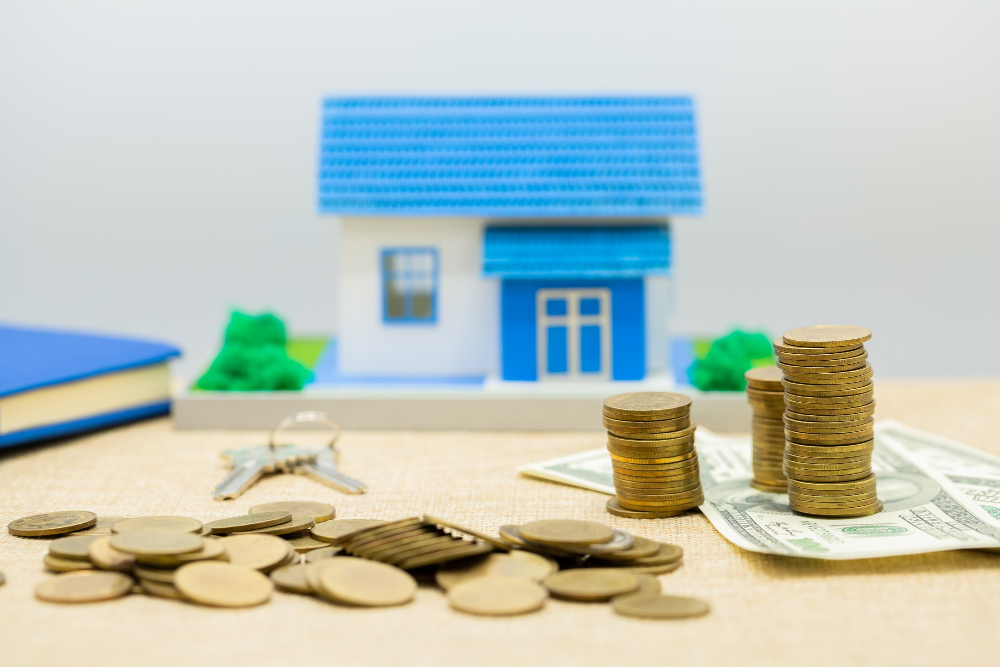Capital Gains Tax for Self-Managed Superfunds (SMSF): From Significant Discounts to Zero Tax in Retirement
Imagine a future where your retirement isn’t just secure but thriving. Where your financial savvy today blossoms into a comfortable, even luxurious tomorrow. This isn’t just a daydream for the fortunate few; it’s a tangible future you can build with the strategic use of Self-Managed Super Funds (SMSFs). Using your Superfund wisely can lead to significant benefits, especially as it becomes tax-free upon retirement. The day-to-day income and the capital gains from selling assets could be a powerful force in shaping your retirement. This isn’t just about saving; it’s about strategically growing your wealth to ensure a comfortable future.
In response to queries from clients, I realised the need for a focused discussion on SMSF capital gain, distinct from the broader topic of Capital Gains Tax (CGT). This article is tailored to shed light on the complex rules and regulations of SMSF capital gain. We will navigate from the foundational principles of CGT within SMSFs to exploring specific exemptions and strategic approaches. My goal is to equip current and prospective SMSF trustees with the knowledge necessary to make informed, intelligent investment decisions.
Property Investment in Self-Managed Superfund (SMSF)
According to the latest information published by the ATO, the combined investment in residential properties, including direct purchases and those through Limited Recourse Borrowing Arrangements (LRBAs), stood at $70.2 billion in 2020-21. The investment in real property through Self-Managed Super Funds (SMSFs) has seen noticeable growth, reaching $166.9 billion in the 2020-21 financial year. Direct investment in non-residential properties like commercial and industrial spaces surged by 15% since 2016.
On the residential front, there’s been a consistent rise in investment over the past five years, with a 23% increase from $33.7 billion in 2016-17 to $41.6 billion in 2020-21. Interestingly, the bulk of SMSF residential property investments fell within the $200,000 to $2 million range, highlighting a preference for this segment. Conversely, the commitment to non-residential properties appeared to increase with the size of the fund.
Source – ATO

What is Capital Gain Tax (CGT)?
Capital gain is a fundamental concept in the Australian taxation system, particularly relevant for investors and property owners. According to the Australian Tax Office (ATO), a capital gain arises when you sell an asset for more than it cost to acquire. This asset can range from real estate, investment property, and shares to managed fund investments. In essence, the profit you realise from the sale of these assets is considered a capital gain.
Although it is referred to as ‘Capital Gains Tax’, this is not a separate tax – it forms part of your income tax and is assessed with your other income. It’s important to note that a capital gain only becomes taxable when the asset is sold. If the asset increases in value but is not sold, there is no capital gain event. Understanding this concept is crucial for anyone involved in investment activities in Australia, as it impacts tax obligations and financial planning strategies.
Imagine you purchased an investment property for $500,000. After several years, you decide to sell the property and manage to sell it for $750,000. To calculate the capital gain, you would subtract the original purchase price from the selling price.
Capital Gain Calculation
- Purchase Price of Property: AUD 500,000
- Selling Price of Property: AUD 750,000
- Capital Gain: Selling Price – Purchase Price
- Capital Gain: AUD 750,000 – AUD 500,000
- Capital Gain: AUD 250,000
In this example, the capital gain is AUD 250,000. This amount would be considered as part of your income and subject to capital gains tax as per Australian Tax Office regulations.

What is Capital Loss?
When you dispose of an investment asset, such as stocks or real estate, at a price lower than its acquisition cost, you incur a capital loss. This loss is fundamentally the discrepancy between the asset’s purchase price and its sales proceed. It’s important to note that calculating a capital loss requires accounting for any improvements made to the asset over time.
For instance, consider you bought an investment property for $500,000. Over the years, you’ve invested in various improvements, including renovating the bathroom, upgrading the kitchen, constructing an alfresco area, and landscaping, with these improvements totalling an additional $200,000. Therefore, the increasing investment in the property amounts to $700,000 ($500,000 purchase price plus $200,000 in improvements). If the property is subsequently sold for $650,000, this results in a capital loss of $50,000.
A capital loss is not an allowable deduction and is only able to be offset against capital gains. If capital losses are greater than capital gains in a financial year, they must be carried forward to be offset against future capital gains.
SMSF Capital Gain During Accumulation Phase
Typically, individuals and trusts are eligible for a 50% discount on capital gains when they retain an asset for over a year. In contrast, the rules for superannuation funds are distinct. Specifically, when a super fund holds an asset for more than 12 months, it qualifies for a capital gains tax discount of one-third. This nuanced difference underlines the unique tax treatment afforded to super funds in comparison to other entities.
Let’s examine the investment journey of the Riley Family SMSF. The fund invested in a property at a purchase price of $600,000, seeing it as a strategic long-term asset. A decade later, the Riley Family SMSF decides to sell the property for $1 million, thereby realising a gross capital gain of $400,000—the difference between the selling price and the original purchase cost.
Given that the investment is within the Riley Family SMSF and was held for over 12 months, the fund qualifies for a one-third discount on capital gains tax. This effectively means that $133,333 of the $400,000 gain is exempt from tax, reducing the taxable gain to approximately $266,667. This remaining gain would be taxed at the super fund’s concessional rate of 15%.
A simpler method to estimate the net capital gains tax for an SMSF is to apply a 10% tax on the gross gain, which, in this case, also results in a tax obligation of $40,000—mirroring the $40,000 calculated as 15% of the discounted capital gain of $266,667. This parallel outcome simplifies tax calculations for SMSFs, ensuring they benefit from their eligible tax concessions.
Pension Phase CGT Rules
A compliant Self-Managed Super Fund (SMSF) is generally subject to a concessional tax rate of 15%. When an SMSF starts disbursing superannuation income streams, often referred to as pensions, in the retirement phase, it may qualify for additional tax concessions. Specifically, the investment income generated by the SMSF’s assets, which support the retirement phase income streams, is exempt from tax. This tax-exempt income is known as Exempt Current Pension Income (ECPI). Also, if the fund sells any assets that are helping pay out retirement pensions, it won’t have to pay capital gains tax on those sales.
Let’s say the Riley Family SMSF in the above example owned a property that was part of its investment portfolio. When this property was sold, the fund was looking at a capital gains tax bill of $40,000 based on the profit from the sale. However, at the time of the sale, the property was supporting the retirement phase income streams for its members. Because of this, the SMSF qualifies for a special tax break.
So, even though the Riley Family SMSF was expecting to pay $40,000 in capital gain taxes from the sale of the property, the fact that the property was supporting the members’ pensions means the fund won’t have to pay any capital gains tax at all. In essence, the tax bill drops from $40,000 to $0 because of the fund’s status in supporting retirement pensions.
Exploring Limited Recourse Borrowing Arrangements (LRBA) and Assets
When you sell an asset under a Bare Trust and Limited Recourse Borrowing Arrangement (LRBA), the treatment of capital gains is the same as if the Self-Managed Super Fund (SMSF) itself sold the asset directly. Therefore, if the fund is not in the retirement phase, the capital gain tax rate will be 10%. Here are some important details to keep in mind:
- Upon the sale’s settlement, the lender will receive the final loan amount and should provide a discharge of the mortgage.
- Typically, the Bare Trustee does not maintain a bank account since transactions such as rental income and asset-related expenses are usually managed through the SMSF’s bank account.
- It’s common for the remaining proceeds from the sale to be transferred to the SMSF’s bank account.
- Afterward, the necessary documents can be arranged to formally dissolve the Bare Trust.
In navigating the complex landscape of Self-Managed Super Funds’ income and capital gains tax, it’s evident that informed decisions can significantly enhance your financial future. The strategic tax management of SMSFs not only requires a deep understanding of the current regulations and tax implications but also a forward-thinking approach to capitalise on potential benefits. If the complexities of SMSF investment and capital gains tax seem daunting, or if you’re seeking to optimise your fund’s performance, we’re here to help.
Investax SMSF Tax Specialists are equipped with the expertise and experience to guide you through every twist and turn of your SMSF tax and compliance journey. Whether you’re contemplating the initial setup, exploring investment options, or devising tax-efficient strategies, our team is committed to providing personalized solutions that align with your retirement goals. Don’t navigate this complex terrain alone; reach out to Investax SMSF Tax Specialists today and take the first step towards securing your financial future with confidence.
Glossary
SMSF – Self Managed Super Fund (SMSF) is a private superannuation fund that individuals manage themselves. It allows members to have control over their retirement savings, make investment decisions, and manage compliance with superannuation laws. SMSFs are regulated by the Australian Taxation Office (ATO) and are subject to specific rules and regulations.
LRBA – A Limited Recourse Borrowing Arrangement (LRBA) in a Self-Managed Superannuation Fund (SMSF) is a financial structure that enables the SMSF to borrow funds to acquire assets such as residential or commercial property. The primary motivation behind using an LRBA in your SMSF is to expand your investment portfolio and accumulate wealth for retirement.
Bare Trust – A bare trust in a Self-Managed Super Fund (SMSF) is a popular structure used to hold an asset, typically a property, when a SMSF implements a Limited Recourse Borrowing Arrangement (LRBA) strategy.
Reference –
Source – ATO
General Advice Warning
The material on this page and on this website has been prepared for general information purposes only and not as specific advice to any particular person. Any advice contained on this page and on this website is General Advice and does not take into account any person’s particular investment objectives, financial situation and particular needs.
Before making an investment decision based on this advice you should consider, with or without the assistance of a securities adviser, whether it is appropriate to your particular investment needs, objectives and financial circumstances. In addition, the examples provided on this page and on this website are for illustrative purposes only.Although every effort has been made to verify the accuracy of the information contained on this page and on our website, Investax Group, its officers, representatives, employees and agents disclaim all liability [except for any liability which by law cannot be excluded), for any error, inaccuracy in, or omission from the information contained in this website or any loss or damage suffered by any person directly or indirectly through relying on this information.





